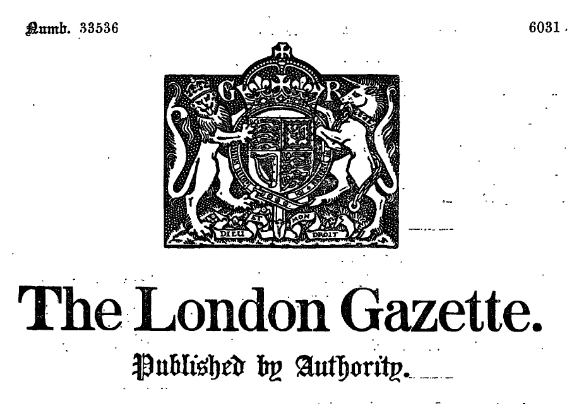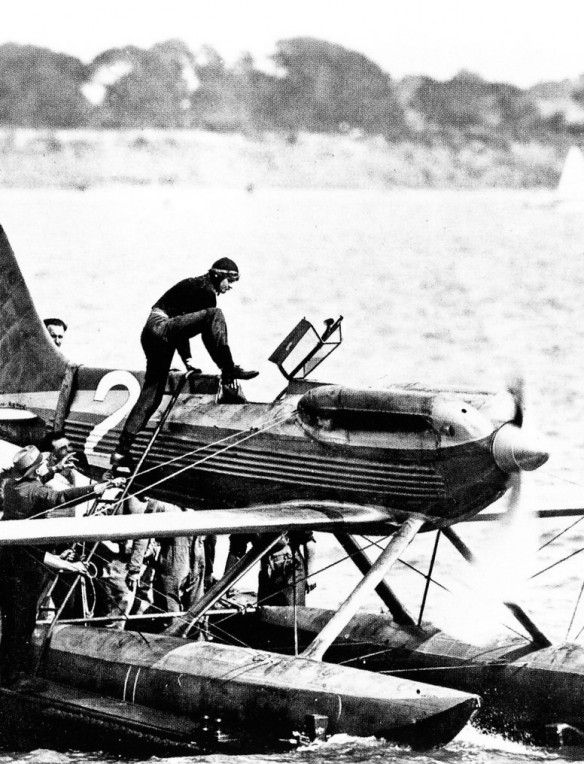
7 September 1929: Flying Officer Henry Richard Danvers Waghorn, a pilot with the Royal Air Force High-Speed Flight based at RAF Calshot, flew a Supermarine S.6, N247, to win the Coupe d’Aviation Maritime Jacques Schneider (Schneider Cup) race.
The race was the eleventh in a series of annual or semiannual races which were first held in 1913, specifically for seaplanes. Teams from several nations, France, Great Britain, Italy and the United States, competed with float-equipped airplanes built specifically for the races. The national team which won three consecutive races would win the series and take home the Trophy.
The 1929 race was held over The Solent, a body of water between the harbor city of Portsmouth, England, and the Isle of Wight. The course was a four-sided polygon of 50 kilometers (31.07 statute miles). Competitors would make seven circuits of the course, with all left-hand turns, for a total distance of 350 kilometers (217.48 statute miles).
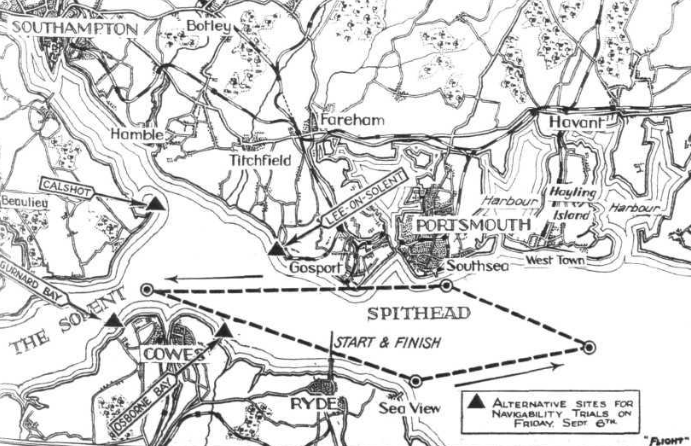
By 1929, the expense of fielding these teams of technologically-advanced airplanes had caused both France and the United States to drop out. Italy entered three Macchi seaplanes and England entered two Supermarine S.6s and a Gloster VI. The Gloster was powered by the very successful Napier Lion “broad arrow” 12-cylinder engine, while the S.6 was equipped with the new Rolls-Royce Type R V-12. The second Supermarine S.6, flown by Flying Officer Richard L.R. Atcherley, was disqualified for crossing inside a pylon at a turn during the race. Italy’s team had one Aeronautica Macchi M.52, which had flown in the 1927 race, powered by a Fiat Aviazone AS.3 V-12, and two new Aeronautica Macchi M.67s, both of which were equipped with the Isotta Fraschini Asso 1000, a “W-18” 18-cylinder broad arrow engine. Great Britain’s racers were painted blue and silver. The Italian aircraft were painted bright red.
All pilots were military officers of the Regia Aeronautica and the Royal Air Force.
The race was actually a time trial. Beginning at 2:00 p.m. on Saturday, individual aircraft would start at 20-minute intervals. There would be only two aircraft on the course at any time. Flying Officer Waghorn was the first to takeoff.
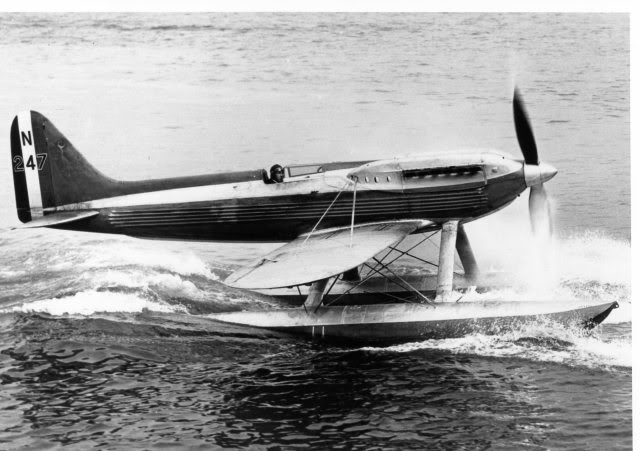
FLIGHT reported:
Precisely at 2 p.m. the boom of the starting gun on the Medea was heard faintly, and exactly two minutes later Waghorn in the Supermarine Rolls-Royce S.6 (No.2) crossed the starting line. Obviously Waghorn had wasted no time in getting into the air. He roared past at tremendous speed, but certainly the impression was not one of some 360 m.p.h., which is what the S.6 must actually have been doing at the time. And the Rolls-Royce racing engine managed to give off its 1,800 or so h.p. with surprisingly little fuss. The large gear ratio resulted in the propeller running relatively slowly and actually from certain points of view, one could see the propeller blades, and not merely a shining shimmering blur marking the disc.
Flying at a constant height of some 200 ft., Waghorn continued on his first lap, and as he sped past along the Hampshire shore the excitement grew intense. What would the speed of the first lap be? That was the question every one was asking. That first lap would give a fair indication of the sort of speeds that could be expected in the contest. After a splendid turn around the West Cowes mark boat, the S.6 once more became, as it was seen by spectators on Ryde pier, a group of three dots approaching and growing larger at a promising rate. The machine roared across the line and disappeared towards the Seaview and Hayling Island mark boats. After a wait of a few minutes, Waghorn’s speed for the first lap was announced: 324 m.p.h. In other words, he not only established a world’s record for the 50-km. closed circuit, but had beaten the speed of de Bernardi over the 3-km. straight-line course! Well done. Oh, very well done! The next question was: “Would the Rolls-Royce engine stay the course?” Watching Waghorn speed around at the same height, lap after lap, the tension eased off. The lap speeds grew at a steady rate, from 324 to 329 and to 331! . . . Then in the fourth lap the speed dropped slightly to 328. Was this a sign that the engine was “tiring”?
. . . Waghorn’s lap speeds were steady around 330 m.p.h., the sixth dropping to 327, but rising again in the seventh to 331. As the S.6 crossed the finishing line the spectators drew a sigh of relief. The Rolls-Royce engine had “stood the racket” for 40 minutes and thus upheld the reputation of an old and famous firm. The average speed for the whole course was 328.63 m.p.h. . . .
—FLIGHT, The Aircraft Engineer and Airships, Special Schneider Trophy Report, 13 September 1929, at Pages 1008–1009
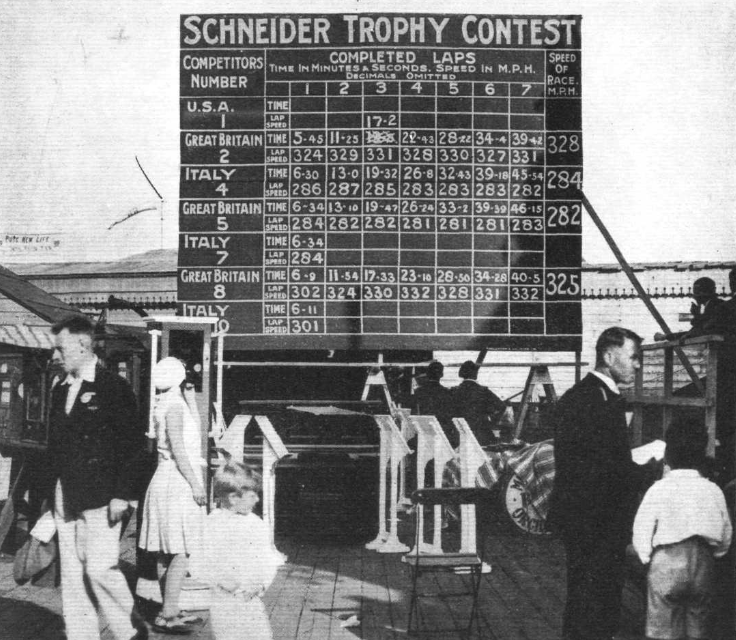
Flying Officer Waghorn’s cumulative lap times were recorded as follows:
Lap 1 5 minutes, 45-1/5 seconds 324 miles per hour (521 km/h)
Lap 2 11 minutes, 25 seconds 329.54 miles per hour (530.34 km/h)
Lap 3 17 minutes, 02-4/5 seconds 331.1 miles per hour (532.9 km/h)
Lap 4 22 minutes, 43-4/5 seconds 328 miles per hour (528 km/h)
Lap 5 28 minutes, 22-4/5 seconds 329.93 miles per hour (530.97 km/h)
Lap 6 34 minutes, 04-4/5 seconds 327.04 miles per hour (526.32 km/h)
Lap 7 39 minutes, 42-4/5 seconds 330.91 miles per hour (532.55 km/h)
Dick Waghorn finished the course in 39:42.8, with an overall average speed of 325.63 miles per hour (528.88 kilometers per hour). He established a Fédération Aéronautique Internationale (FAI) World Record for Speed Over a 100 kilometer Course, with an average speed over two consecutive race laps of 531.20 kilometers per hour (330.07 miles per hour).¹
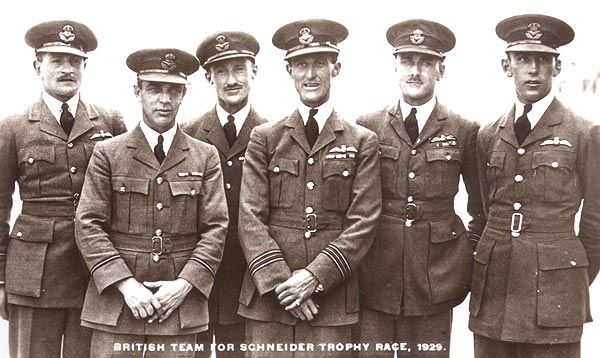
Five days later, 12 September 1929, the High-Speed Flight commander, Squadron Leader Augustus Henry Orlebar, A.F.C., flew N247 to an FAI World Record for Speed Over a 3 Kilometer Course of 575.20 kilometers per hour (357.41 miles per hour).²
The pilots of the 1929 British Schneider Cup team were members of the RAF High-Speed Flight, based at RAF Calshot. With the exception of Squadron Leader Orlebar, all the pilots had been instructors at the Central Flying School at RAF Wittering. They trained on float planes after transfer to the High-Speed Flight when it was initially established at RAF Felixstowe, later moving to Calshot.
Flying Officer H. R. D. Waghorn is a London man, having been born in Kensington in 1904. Educated at Wellington, he proceeded in 1922 as a cadet to the Royal Air Force College, Cranwell, where he was a contemporary of Flying Officer Atcherly.
On graduating in 1924 he was posted to No. 17 (Fighter) Squadron, and after taking a flying instructor’s course in 1926 at the Central Flying School became an instructor there. He remained at the school until February of this year when he joined the High-Speed Flight. He is a noted skier.
—FLIGHT, The Aircraft Engineer and Airships, No. 1077 (No. 33. Vol. XXI.) 15 August 1929, at Page 875, Column 2
Air Ministry,
20th September 1929
ROYAL AIR FORCE.
The KING has been graciously pleased to approve the award of the Air Force Cross to Flying Officer Henry Richard Danvers Waghorn in recognition of his achievement in winning the recent “Schneider Trophy” Air Race.
—The London Gazette, Number 33536, Friday, 20 September 1929, at Page 6035, Column 2
Flight Lieutenant Henry Wichard Danvers Waghorn, A.F.C., Royal Air Force, died of injuries, 7 May 1931.
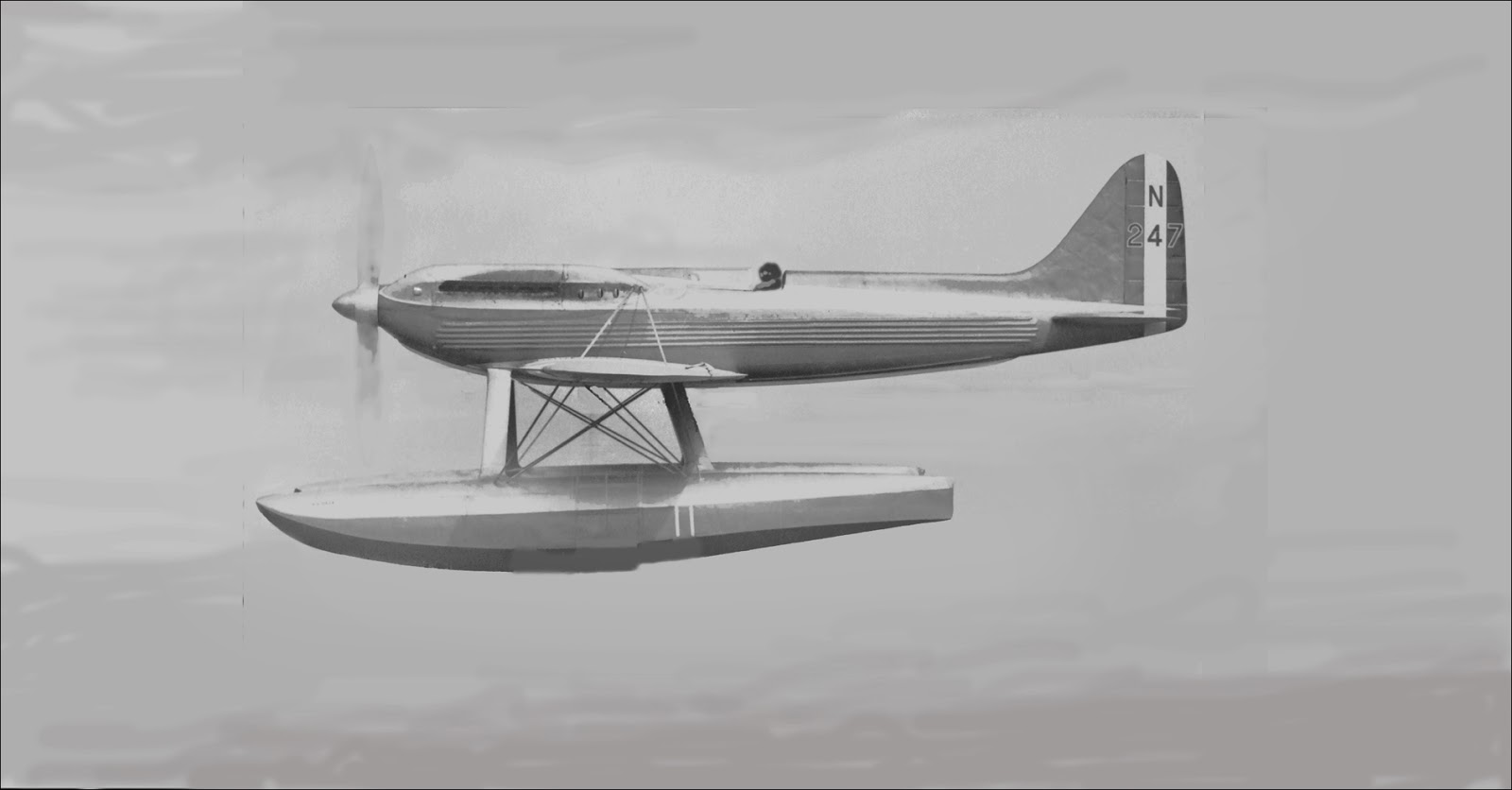

The Supermarine S.6 was a single-place, single-engine, low-wing monoplane with two fixed pontoons as an undercarriage. It was of all-metal construction and used a high percentage of duralumin, a very hard alloy of aluminum and copper, as well as other elements. The float plane was 25 feet, 10 inches (7.874 meters) long, with a wingspan of 30 feet, 0 inches (9.144 meters) and height of 12 feet, 3 inches (3.734 meters). The S.6 had an empty weight of 4,471 pounds (2,028 kilograms) and gross weight of 5,771 pounds (2,618 kilograms).
In an effort to achieve the maximum possible speed, aerodynamic drag was eliminated wherever possible. There were no radiator or oil cooler intakes. The wing surfaces were constructed of two thin layers of duralumin with a very small space between them. The engine coolant, a mixture of water and ethylene glycol, was circulated between these layers, which are known as surface radiators. The engine had a high oil consumption rate and the vertical fin was the oil supply tank. The skin panels also served as surface radiators. The fuselage panels were corrugated for strength, and several small parallel passages transferred lubricating oil from the fin tank to the engine, and further cooled the oil.
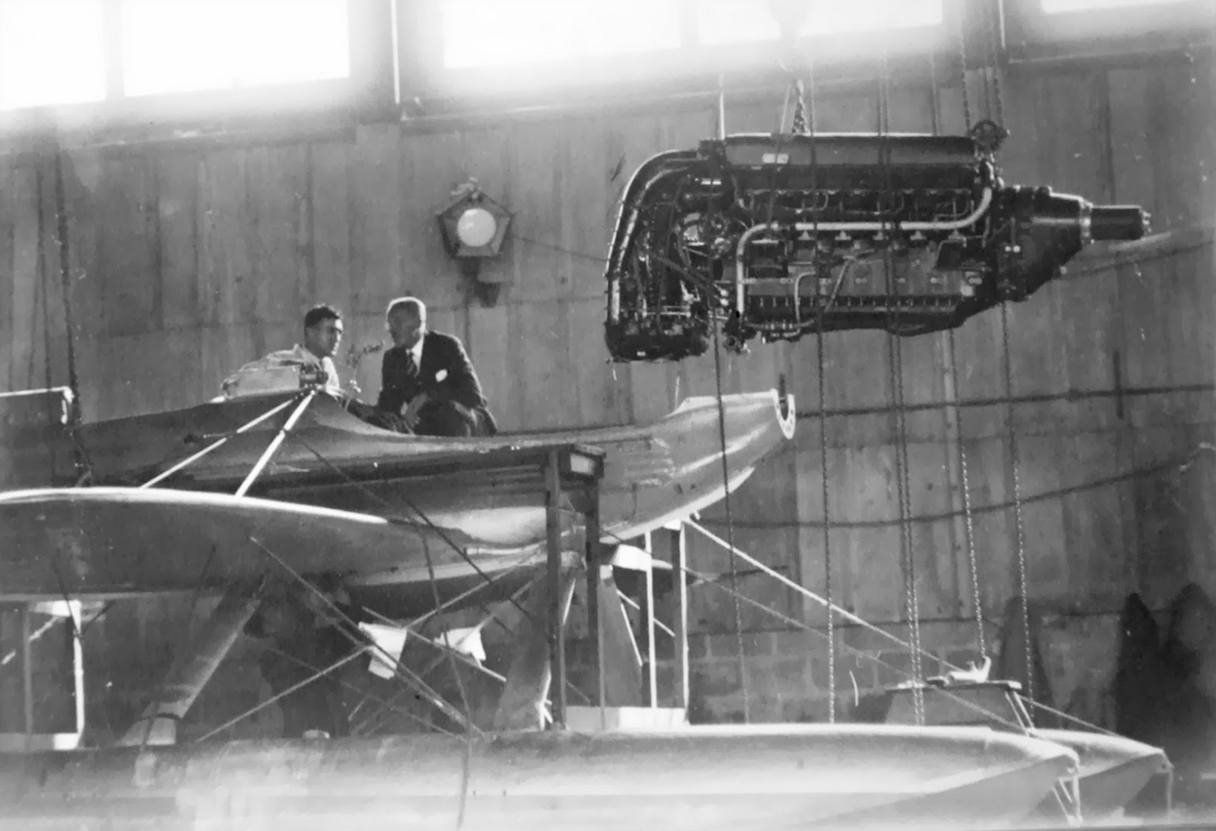

The engine burned an exotic fuel mixture of 11% aviation gasoline and 89% benzol (benzene and toluene). Tetraethyl lead was added to the mixture to limit pre-ignition. The float plane’s fuel supply was carried in the pontoons. Because of the engine’s high rate of consumption and the limited fuel capacity, the S.6 was unable to run at full power during the Schneider race.
Supermarine S.6 N247 was destroyed on takeoff, 18 August 1931. The pilot, Lieutenant Gerald L. Brinton, Royal Navy, assigned to the RAF High-Speed Flight, was killed.
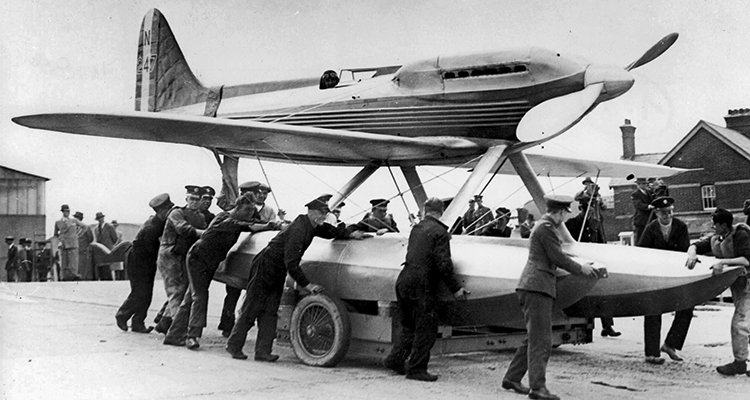
¹ FAI Record File Number 14999
² FAI Record File Number 11830
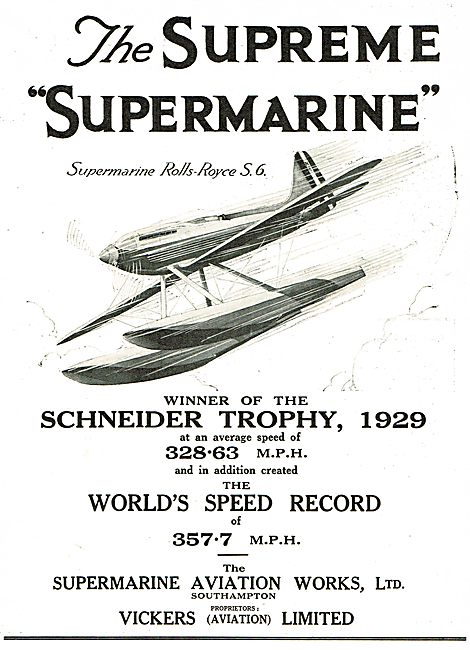
© 2018, Bryan R. Swopes
